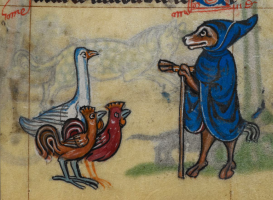The theory that animals belonging to different species perceive in different but equally legitimate ways, depending on their specific vital needs, is something that we nowadays tend to take for granted. My project reconstructs the emergence of this idea in the Latin Middle Ages, and explains why most thirteenth- and fourteenth-century thinkers found it so problematic. “A human being sees through the eye in the same way that a horse does,” Thomas Aquinas claimed, while Roger Bacon argued that “a dog sees and hears just as well as a human being.” On their accounts, human perception was nothing but animal perception on two legs.
But is that really the whole story? In fact, medieval thinkers’ understanding of animals as perceivers was richer than their abstract philosophical commitments would lead one to believe. I consider four thinkers operating in very different contexts and in a wide range of genres: an encyclopaedia, commentaries on Aristotle, and a self-standing treatise. Discussing Thomas of Cantimpré’s De natura rerum (1225–44), Peter of Spain’s Questiones super libro de animalibus Aristotelis (1246–49), Albert the Great’s De animalibus (1258–59), and Roger Bacon’s Perspectiva (1266–68), I show that they defended highly peculiar accounts of animal sentience, pushing to the limit the claim—their own claim—that all animals perceive alike.
The project concludes by charting the early modern developments of these debates, as thinkers up to the mid-eighteenth century took to their furthest conclusion the qualifications introduced by medieval authors and began to establish a thorough, species-dependent account of sense perception.

